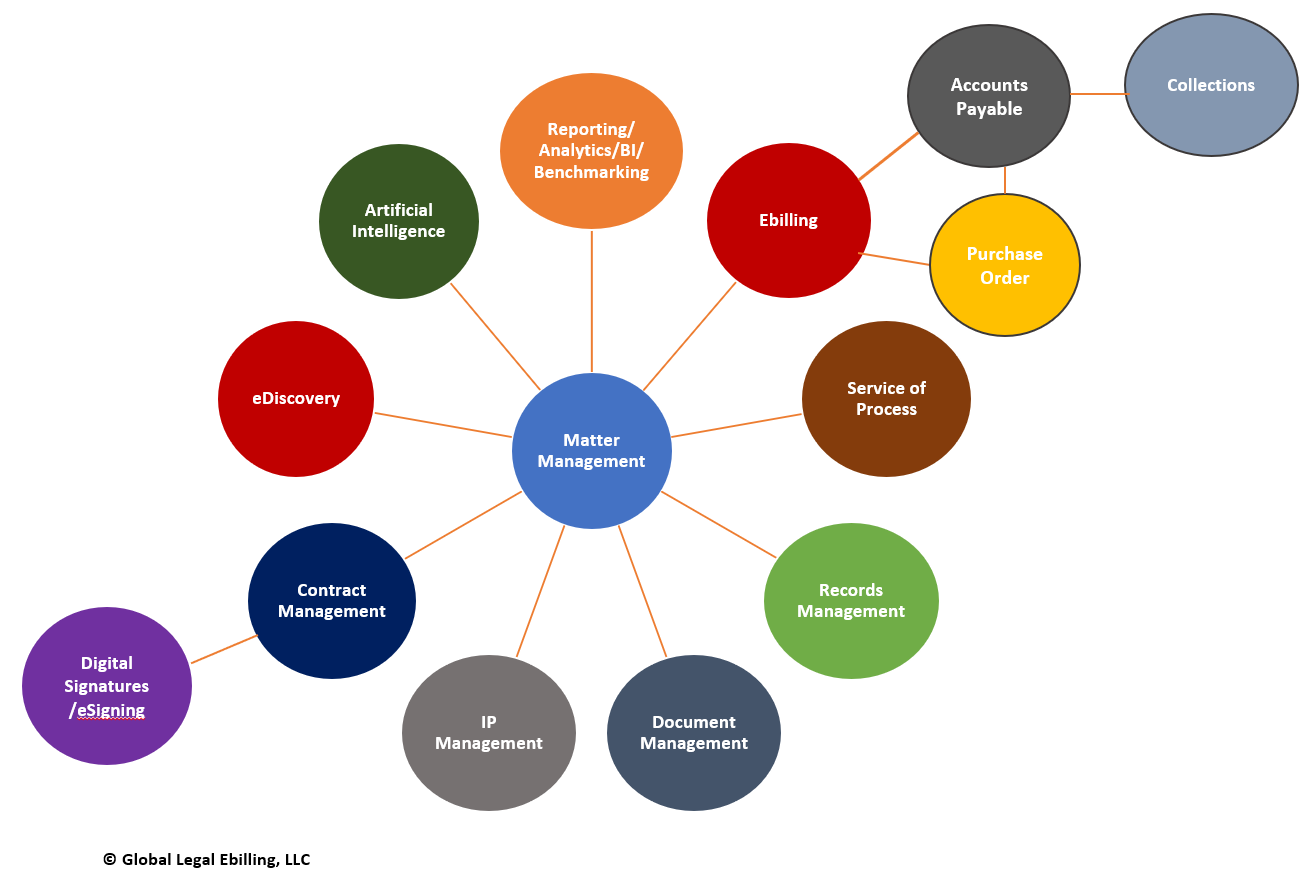Wikipedia offers a great explanation of the term Enterprise Legal Management:
…a practice management strategy of corporate legal departments, insurance claims departments, and government legal and contract management departments.
ELM developed during the 1990’s in response to increased corporate demands for accountability, transparency, and predictability, and employs software to manage internal legal documents and workflows, electronic billing and invoicing, and to guide decision-making through reporting and analytics.
Below is a graphic that shows the type of systems that can be found within a law department’s ELM landscape.

At the heart of the system is matter management, which includes many base data elements that also drive the other integrated components. Other systems can include ebilling and it’s relationship to accounts payable, collections and the purchase order system; a service of process feed, records management, contract management and its relationship to digital signatures, document management, reporting/analytics/BI or benchmarking, and IP management.
The important take-away is that for legal organizations, ELM includes all of the systems typically used to manage a legal enterprise connected via integration, with matter management at its core.
